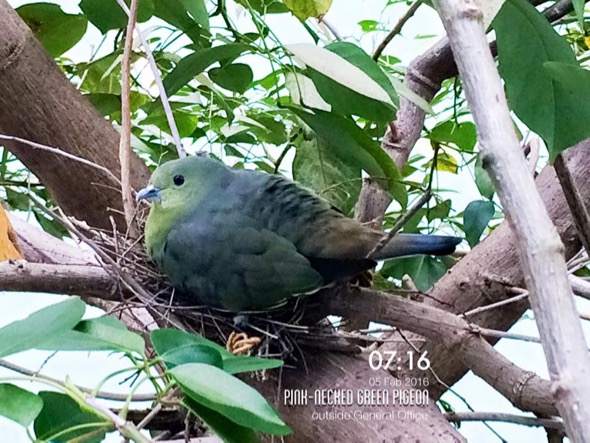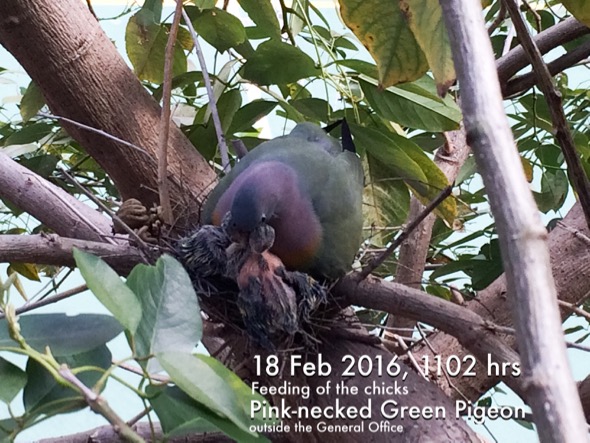“We are glad that Commonwealth Secondary School is home to a pair of Pink-necked Green-pigeons (Treron vernans). These pigeons feed mainly on fruits.
“Their colourful plumage allows them to blend perfectly with the foliage of fruiting trees. The male has the upper throat that is pale bluish-grey, with a broad orange band across lower breast. The female basically has an overall olive green shade throughout the body.
![Male Pink-necked Green-pigeon sitting in the nest during the day (Photo credit: Jack Sum]](https://besgroup.org/wp-content/uploads/1-GreenPigeonPN-m-nest-JackSum.jpg)
“The male has a distinctive high-pitched cooing whistle, ooo-ooo, cheweoo-cheweoo-cheweoo, with the 2nd note much longer.
“The nest is a fragile platform made of loose twigs, set in the fork of a branch. The male collects and passes twigs to the female to assemble as she sits in the developing nest.

“Each time either one or two glossy white eggs would be laid. Both sexes share parental duties, incubating the eggs for about 17 days, and taking care of the near-naked nestlings, the male during the day, the female throughout the night.
“The most fascinating feature of pigeons and doves is their ability to produce crop milk. During breeding seasons, these special glands in the gullet of both males and females enlarge and secrete a thick milky substance. The chicks drink this milk by poking their bills into the parent’s throat (see video above).

“Thus pigeons and doves can feed their young without having to incessantly hunt or forage for food. Instead of laying many eggs, they lay one or at most two eggs. Their abundance is proof that this feature gives them the advantage.
“Look out from the corridor outside the General Office to spot this nest. It’s the third time this species of bird has nested in our school, and the second time on this exact tree.

“I encourage you to go and take a look as it is rare opportunity for us to be having such an up-close view of a nest that is occupied.
“Let’s keep this familly safe in our school as we wait for the the chicks to leave the nest.”
Jacob Tan Guanrui
Senior Teacher (Biology)
Commonwealth Secondary School
Singapore
10th February 2016









One Response
Wonderful to know that there are outdoor classroom sessions for our children. Lets have more of these sessions.